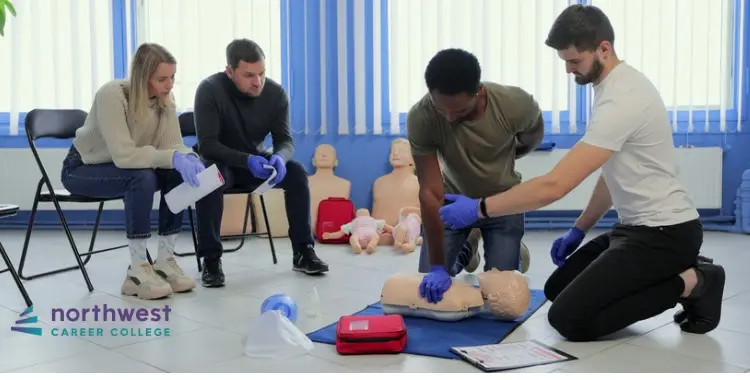Common CPR Mistakes: Ensuring Effective Life-Saving Techniques
- CPR
- May 24, 2024
- 2.3k views
- 3 min read

Cardiopulmonary Resuscitation (CPR) is one of the basic practices of emergency medical care. Proper CPR administration is one way of potentially saving a life.
Although knowing how to perform CPR is crucial, many people may need to improve its effectiveness more due to simple mistakes. This guide highlights these common errors and provides detailed insights to ensure CPR is administered correctly in critical situations.
Table of Contents
Inadequate Depth and Rate of Chest Compressions
Failure to deliver the appropriate depth and rate of chest compressions is the most common error occurring during CPR. In reality, many studies have found that inadequate compressions in depth or frequency may significantly reduce blood flow to critical organs, thereby minimizing the chances of successful resuscitation.
The American Heart Association (AHA) recommends that chest compressions be at least 2 inches deep and that the rate be around 100 to 120 per minute.
Poor Hand Placement and Technique
Since CPR’s purpose is to ensure maximum blood flow, it is essential that exact hand positioning and technique be used. Any misplacement of the hands, too low on the sternum, or applying too much pressure could cause injuries or ineffective compressions.
The CPR practitioner should properly place their hands in the middle of the victim’s chest, aligning with the lower half of the sternum. Releasing pressure on the sternum after every compression is essential so the victim’s chest fully recoils and the heart can refill with blood.
Neglecting to Provide Adequate Rescue Breaths
In CPR, rescuers must ensure that they sufficiently include rescue breaths. While chest compressions can maintain circulation, they alone are insufficient to infuse additional oxygen, a critical tissue survival factor. Therefore, rescue breaths are necessary to provide extra oxygen to the patient.
However, rescuers often hesitate or omit breaths altogether because they worry about disease transmission or feel unprepared. Remember to perform 30 chest compressions followed by two rescue breaths in the proper ratio for the most effective results.
Inconsistent Compression-to-Ventilation Ratio
The CPR process must have a fixed compression-to-ventilation ratio for perfusion and oxygenation to remain at a normal level. A deviation from the ratio could compromise the chances of a positive result because it may affect the effectiveness of resuscitation efforts. The compression-to-ventilation ratio for adult victims has to be 30:2. The compressions and breaths must be synchronous and uninterrupted.
Delayed Initiation of CPR and Defibrillation
Time is of the essence when it comes to CPR interventions; any form of response delay impacts the capacity to save lives. Unfortunately, people often become indecisive under stress, especially when the survival of a loved one is at stake, and this indecision can result in a delayed start to CPR, either because they panic, are uncertain, or fear causing damage.
Any delays in accessing and setting up the AED (Automated External Defibrillator) ultimately delay timely defibrillation, a critical intervention that restores the cardiac rhythm to normal. Quick response is very important in cases of cardiac arrest since the chances of survival are highly elevated with the early initiation of CPR and defibrillation.
Conclusion
Finally, it is essential that every human being master the basics of CPR because, during a critical moment, knowing CPR can be the difference between life and death. Consistent training, knowledge of CPR algorithms, and prompt application are required to achieve proficiency in approaches toward saving a life.
Take action today! Enroll in a CPR program and equip yourself with the skills to save lives.



